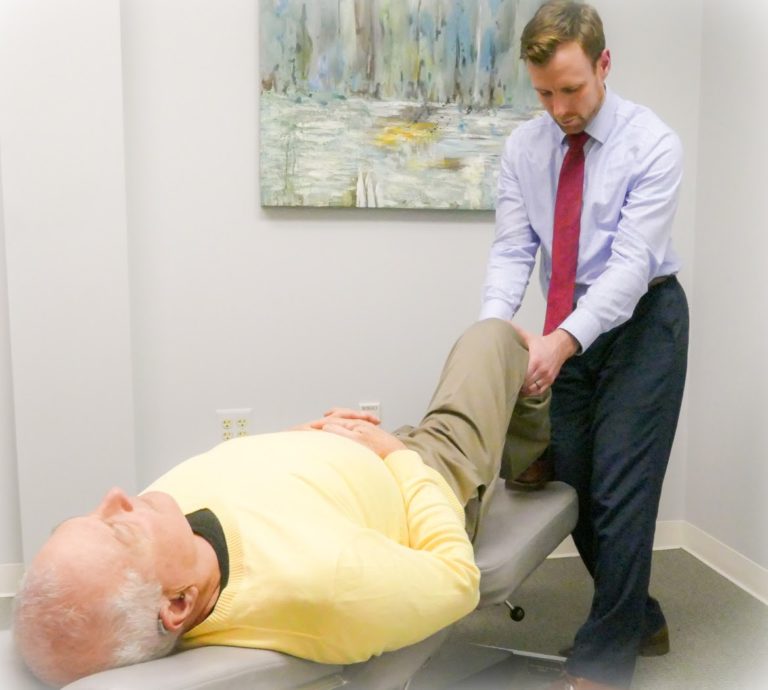Frequently Asked Questions
Hamstring Injuries FAQs
What are Hamstrings and What do they do?
The hamstrings are large muscles in the back of the thigh. The hamstrings connect the ischial tuberosity of the pelvis, cross the back of the thigh, and attach to either side of the shinbone (tibia). The primary function of the hamstring is to pull the leg backward and propel the body forward while walking or running. These muscles are most often injured during rapid acceleration such as in football, soccer, baseball, softball, lacrosse, basketball, running and track.
What is Involved in a Hamstring Injury?
Hamstring conditions can occur from one powerful movement such as a sprint or from repetitive stress such as marathon running. Hamstring injuries are known as strains meaning that some or all of the fibers in the muscle tear. Some complete tears do require surgery but the majority can be treated with chiropractic and rehabilitation.
What Does a Hamstring Injury Feel Like?
In less severe cases, an athlete may feel a tightness or pulling in the back of the knee that causes them to rest or slow down. In more severe situations, the athlete may even hear a pop before falling to the ground in pain. Pain caused by the injury is heavily dependent on whether the hamstring is pulled, partially torn, or completely torn. It is important to see a therapist or specialist before the injury becomes a long-lasting problem.
What are the Chiropractic Treatments for a Hamstring Injury?
Treatment begins with a rest, compression, ice and elevation. Rarely a period of immobility is required. As soon as possible, motion is restored to the region. This is done through chiropractic adjustments of the affected region, knee, hip, pelvis and spine as indicated. Soft tissue techniques are used to break up scar tissue in the muscle as it heals. These techniques are similar to stretching combined with massage. Electrotherapy and ultrasound may also be used to facilitate healing at the injured region. Once motion is restored, a strengthening program is started. Progression is completed from light weights to dynamic sports specific movements.
My Hamstring Injury is Recurring, Why does this Injury keep coming back?
Hamstring injuries can be frustrating because the healing process is sometimes slow and re-injury is common. Return to play too soon can cause re-injury. However, other factors should be considered in chronic hamstring strains that either keep coming back or never completely go away. One possibility is that the original tear created scar tissue and soft tissue adhesions that prevent proper healing.
While some hamstring injures may heal on their own, chronic or reoccurring hamstring injures require aggressive treatment including deep soft tissue treatment aimed at breaking the adhesions and scar tissue. Another reason hamstring injuries keep reoccurring involves a type of posture that is predisposed to hamstring problems. See the next question for more details.
Can Posture Contribute to Hamstring Injuries?
Posture an alignment do play a role in hamstring injuries especially if the same injury has occurred multiple times. A common posture misalignment in individuals with chronic hamstring problems is known as an anterior pelvic tilt. Individuals with this posture have a pelvis that is tipped forward and an increased cure in their low back. This tilt of the pelvis causes the hamstrings to become elongated. Consequently the hamstrings are always tightly stretched making them susceptible to injury.
Other misalignments that can impact the hamstrings and include a rotation of the pelvis, SI joint dysfunction and a leg length discrepancy. Similar to a car with poor front end alignment that constantly wears out tires, an individual with joint misalignments can constantly have hamstring problems. Targeted chiropractic adjustments of the misalignments combined with rehabilitation treatment for the hamstring is a comprehensive approach to lasting relief.

We pride ourselves in our caring and long-term relationships we develop with our patients, so schedule an appointment today. We look forward to seeing you!
